Speaker
Description
Pollen allergy is one of the most common allergic diseases globally, affecting the quality of life of a significant portion of the population [1]. In Ukraine, there are three main pollination waves: the first, spring wave – pollination of woody plants (with Betula – birch having the most allergenic pollen), the second – summer wave caused by grass pollen, and the third, autumn wave – caused by weed pollen, among which Ambrosia artemisiifolia (ragweed) is the most potent allergen. The pollen of common nettle (Urtica dioica), which is a cosmopolitan plant with a long vegetation period, has lower allergenicity compared to other weeds such as Ambrosia artemisiifolia, but can also cause allergic reactions [2, 3], although it is considered low to moderately allergenic. At the same time, due to environmental pollution and climate change, pollen allergenicity may increase, and vegetation periods, along with flowering periods, may extend. Therefore, the aim of our work was to analyze the pollination patterns of stinging nettle (Urtica dioica) in Vinnytsia under climate change conditions, determine the impact of environmental factors on its flowering duration, and assess the potential risk for populations sensitive to its pollen.
The study of Urtica dioica pollination was conducted by the Educational-Scientific-Research Laboratory for the Study of Environmental Allergenic Factors at National Pirogov Memorail medical University during 2019-2023. Nettle has a long vegetation period in Ukraine, lasting from spring to mid autumn and produces the highest number of pollen grains in comparison with other species. The start of pollination is recorded in April-May, and the end in August-September. Due to global warming, plant flowering periods are extending. In 2024, common nettle in Vinnytsia flowered until the end of November, significantly exceeding usual timeframes. Peak pollen concentrations in different observation years occurred between July 16 and August 9, averaging 380 pollen grains/m³.
Sensitivity to nettle pollen is evidenced by data obtained from Vinnytsia region residents using the ALEX test and consisted around 2,33 %.
Air pollution affects the increase in allergenicity of nettle pollen [4]. The presence of toxic substances in the environment contributes to changes in pollen protein structure, making them more aggressive for the immune system. Therefore, it is necessary to improve the pollen monitoring system and ensure access to medical care for patients with allergies.
Conclusions:
1. Urtica dioica remains an important component of Ukraine's phytoenvironment, particularly in the Vinnytsia region.
2. Climate change causes extension of vegetation and pollination periods, which increases the population's exposure time to allergens.
3. To assess the risks of nettle pollen allergy, continuous monitoring of pollen activity, climate impact, and environmental pollution is necessary, as well as implementation of patient sensitivity monitoring.
4. Implementation of measures to reduce air pollution, impact of climate change, and allergen exposure is necessary to minimize the risks of allergic diseases.
References:
1. D'Amato G, Murrieta-Aguttes M, D'Amato M, Ansotegui IJ. Pollen respiratory allergy: Is it really seasonal? World Allergy Organ J. 2023 Jul 15;16(7):100799. doi: 10.1016/j.waojou.2023.100799. PMID: 37520612; PMCID: PMC10384659.
2. Tiotiu A, Brazdova A, Longé C, Gallet P, Morisset M, Leduc V, Hilger C, Broussard C, Couderc R, Sutra JP, Sénéchal H, Poncet P. Urtica dioica pollen allergy: Clinical, biological, and allergomics analysis. Ann Allergy Asthma Immunol. 2016 Nov;117(5):527-534. doi: 10.1016/j.anai.2016.09.426. Epub 2016 Oct 24. PMID: 27788883.
3. Vega-Maray AM, Fernández-González D, Valencia-Barrera R, Suárez-Cervera M. Allergenic proteins in Urtica dioica, a member of the Urticaceae allergenic family. Ann Allergy Asthma Immunol. 2006 Sep;97(3):343-9. doi: 10.1016/S1081-1206(10)60799-5. PMID: 17042140.
4. Sabo NČ, Kiš T, Janaćković P, Đorđević D, Popović A. Pollution by Urticaceae pollen-influence of selected air pollutants and meteorological parameters. Environ Sci Pollut Res Int. 2016 May;23(10):10072-9. doi: 10.1007/s11356-016-6163-x. Epub 2016 Feb 11. PMID: 26865493.

